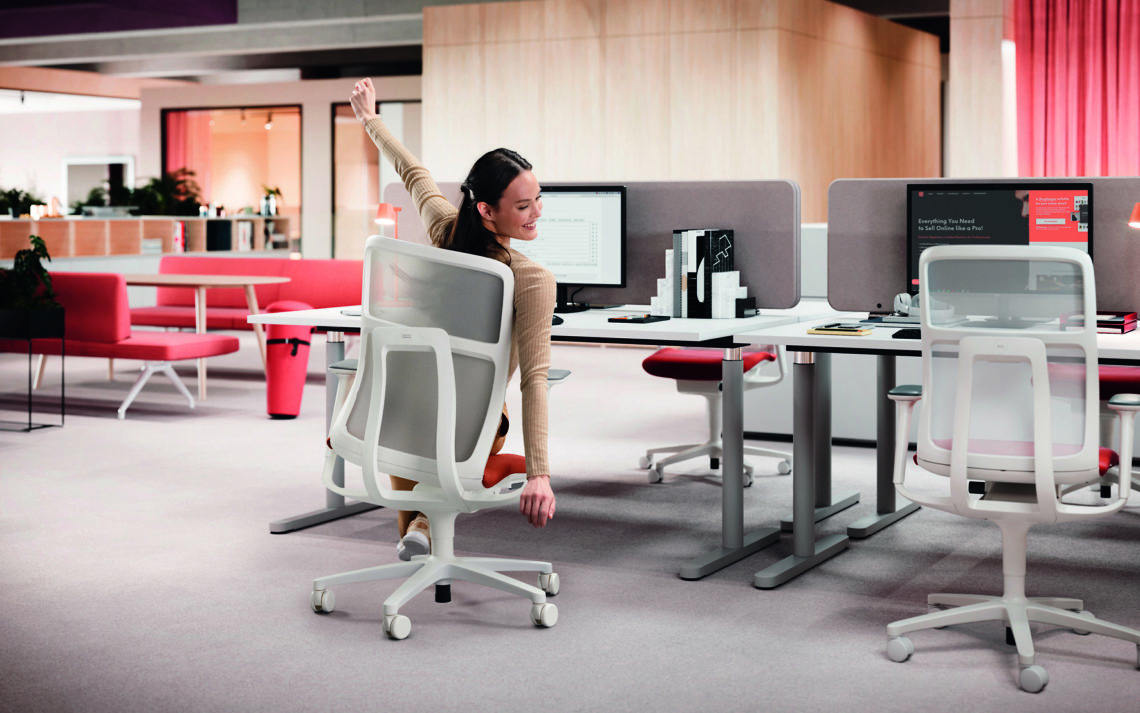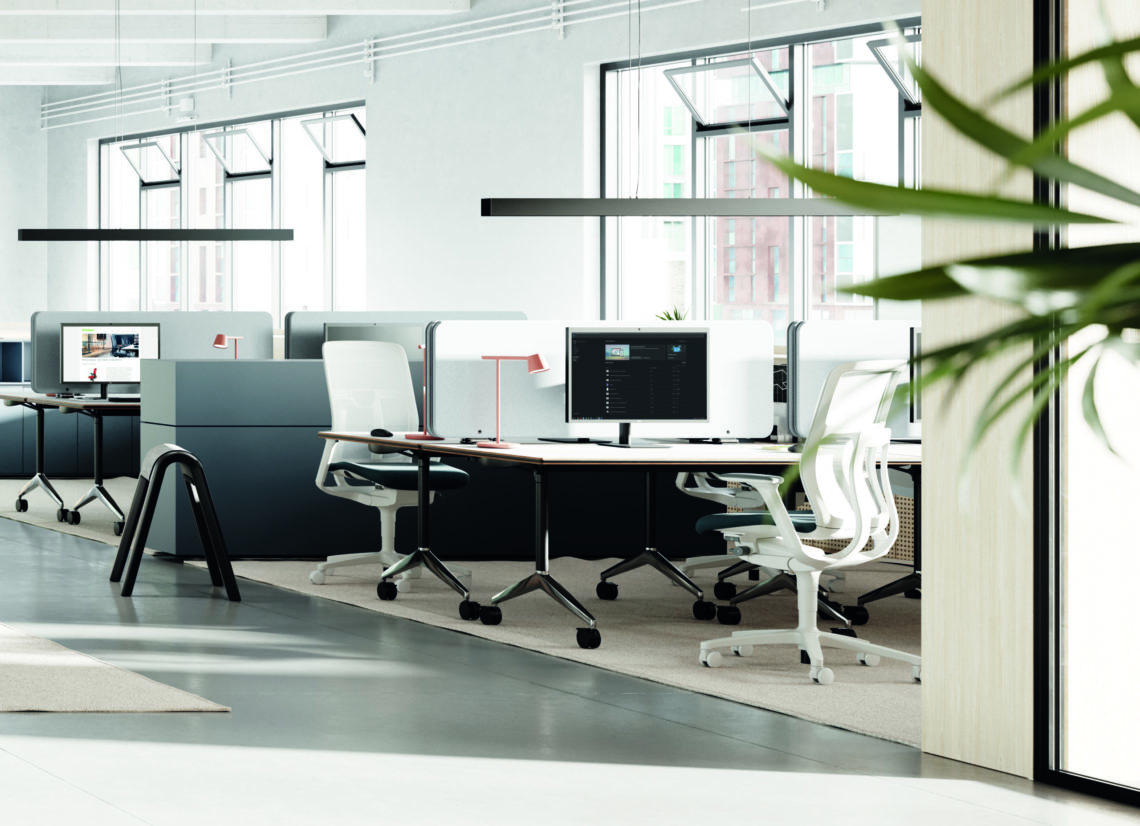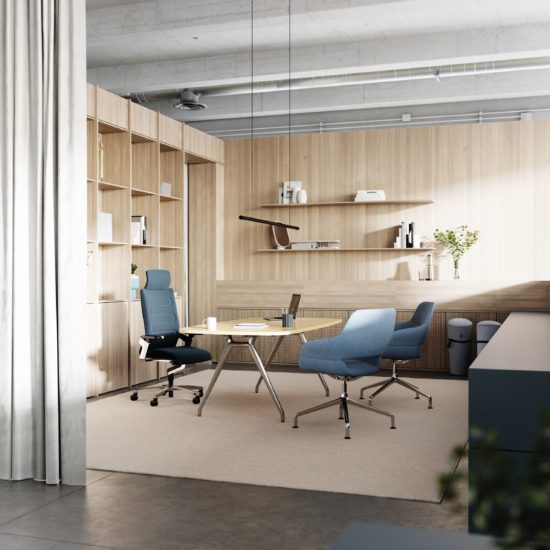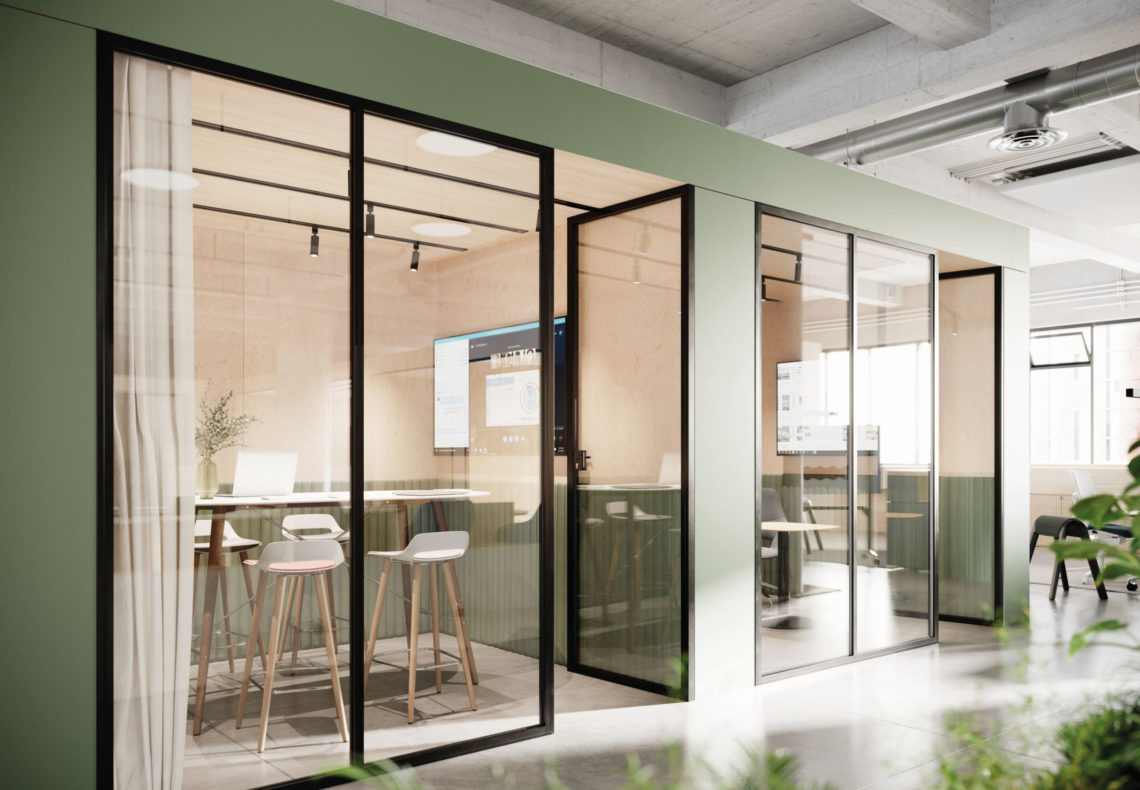Communicating and collaborating are considered the keys to meeting the upcoming challenges that digitalisation presents to nearly all aspects of the working environment more quickly, more cost effectively and, above all, more successfully. However, the right combination of communication and deep work is required to create added value productively. Which is why the human-centered workplace offers a range of different spaces to suit the job at hand and preferences, so that people can reflect, conduct research, create documents or complete projects.

Working for hours at a computer requires a large display, peace and quiet and furniture that counteracts the chronic lack of physical activity that’s associated with these types of sedentary jobs. Because people’s bodies need a diverse range of small but frequent movements to keep their joints and muscles healthy. Even our brains shut down if they’re not stimulated by movement now and again. In the human-centered workplace, we’re encouraged to move while we’re sitting down already. Which is why desks are paired with AT free-to-move office chairs that automatically translate small, undeliberate shifts in weight into three-dimensional movement. The backrest’s mesh covering ensures good airflow, making the chair pleasant to sit on. Because the backrest’s counter pressure adjusts automatically to different users, whatever the direction of movement, several people can use a workspace easily and exceptionally cost effectively. Electrically height-adjustable Travis tables motivate users to alternate between sitting and standing and acoustic panels cut down any distractions from noise. Stand-up stools and Insit benches are ideal for areas destined for breaks and meet-ups because they generate collaboration and a community spirit. The materials used, such as the chairs’ mesh backrests, 80% of which is made of recycled PET bottles, indicate a responsible use of resources. And last but not least, the seat cushioning and frame colours are coordinated with the interior, so that corporate identity is obvious throughout despite the variety of options offered.

Project teams, who sometimes work at computers, can pick a workspace in the versatile project office, which is partitioned off with highboards. In this case however, the space is furnished with flip-top Timetable desks with Foldscreen panels to provide privacy and dull any noise. As a result, it’s easy to add or take away desks, push them closer or further apart, depending on what the team requires at the time. Spare tables nest compactly into one another in the storeroom and Sitzbock pommel-horse-like seats are ideal for impromptu chats. The opportunity for people to configure their workspaces themselves makes them fitter, boosts team spirit, engagement and identification with the company’s objectives.

In executive offices, the principle of transparency and the overarching range of materials, colours and designs also apply because they convey a sustainable mindset, well-being and energy. Managers need to communicate a lot more, so meetings lie at the heart of the workspace concept. There are no big screens to get in the way, but a dynamic office chair is a must. ON has distinctive upholstery and supports healthy changes of posture so that people can sit upright, lean to the side or just lounge about. And although they look just as appealing as seating in homes, the Occo conference chairs with their active rocking technology make sitting at the Versa table a motion-driven option. As the table can be removed quickly, the setting is reconfigured in no time.

The human-centered workplace’s room-in-room solutions are ideal for anyone seeking a haven of quiet to take part in laptop chats or prepare presentations. The Occo high tables and bar stools with their appealing solid wood frames are normally destined for team meetings and video conferences. With the curtains closed, this type of space is an inspiring, screened-off environment.
By providing maximum flexibility, fostering initiative and motivating people to configure their own workspaces, Wilkhahn’s human-centered workplace can unlock brand-new potential and ensure maximum sustainability.
For further information about this topic visit the website: www.wilkhahn.com
